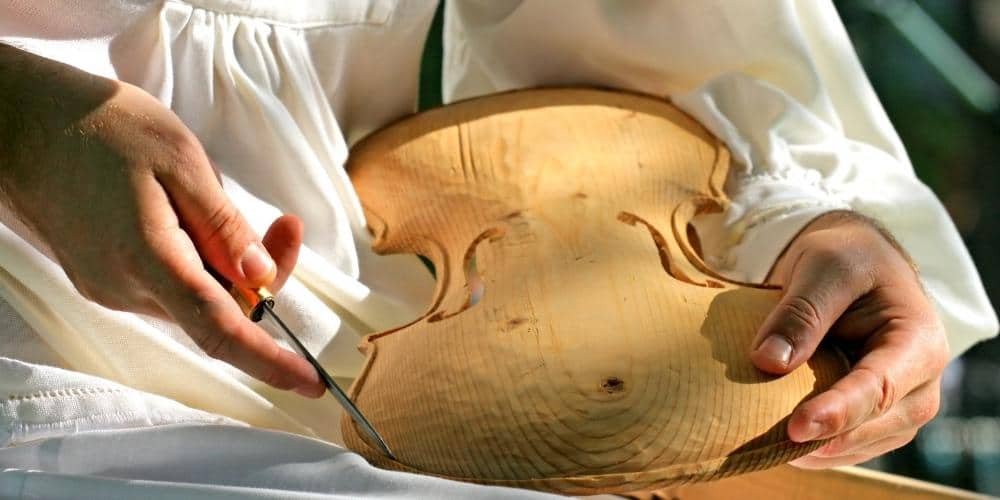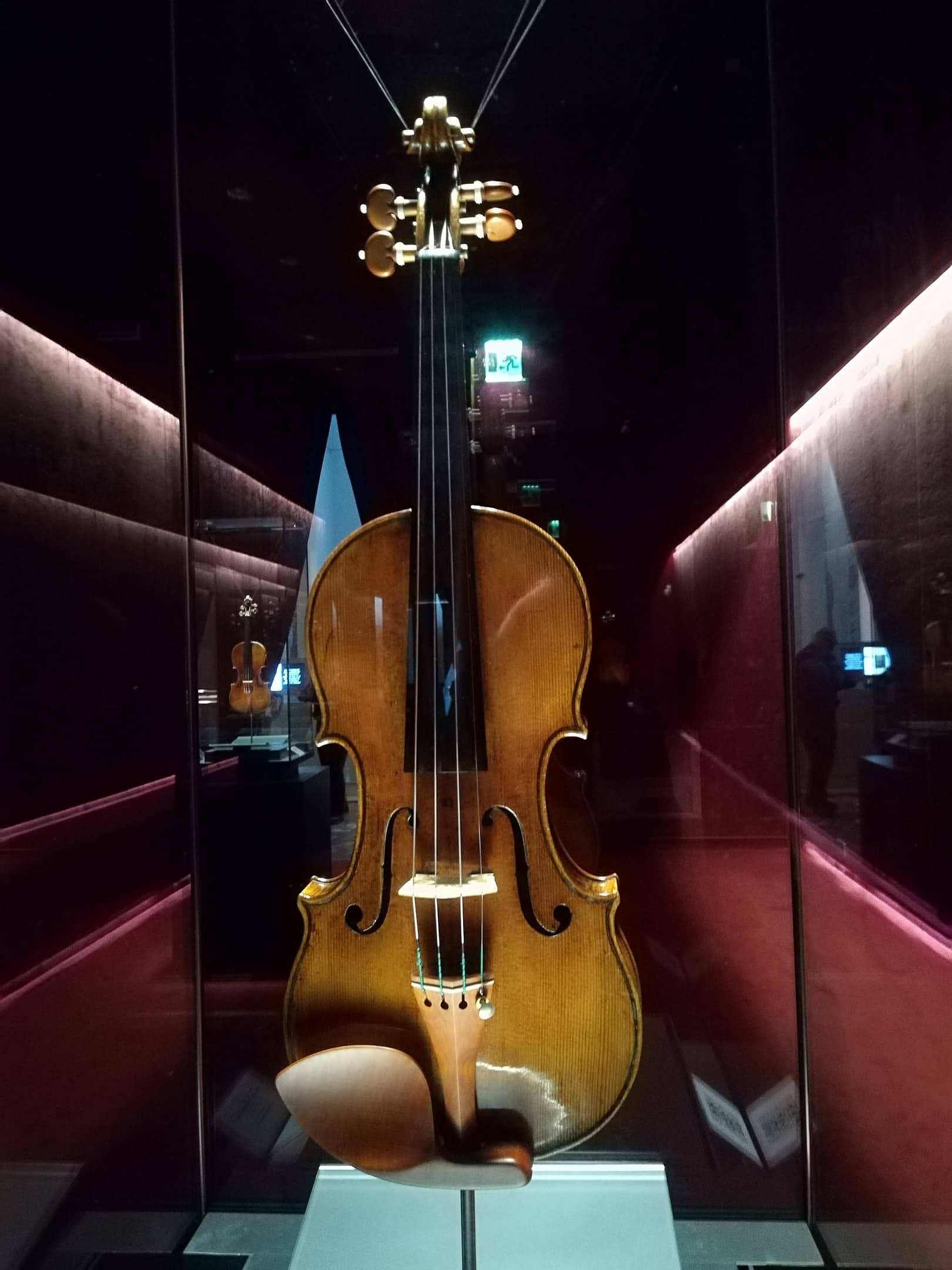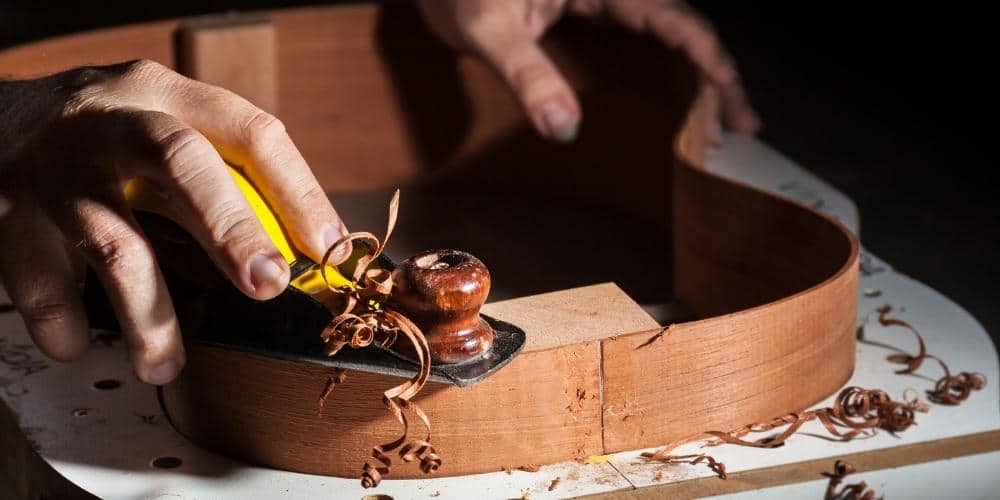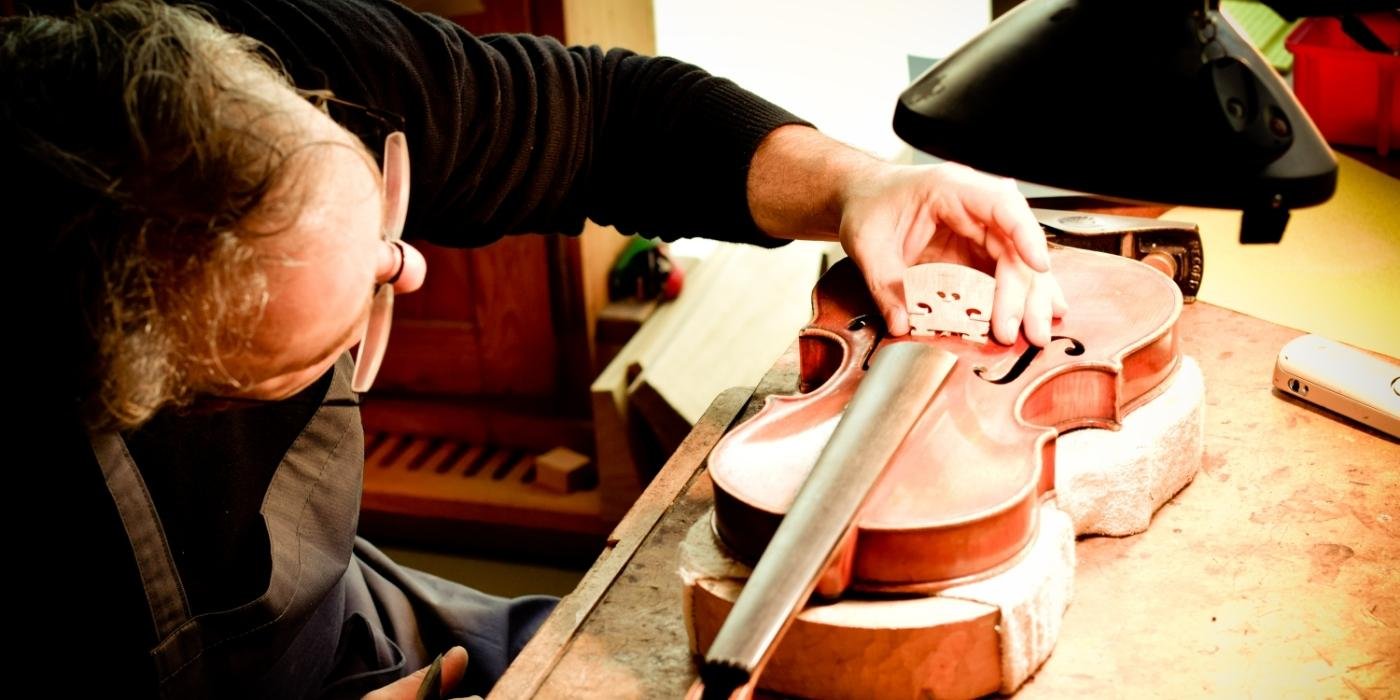It takes passion and technique, great skills and a genuine love of music to build a perfect violin. And of course precious woods not chosen at random. It is with this spirit that the italian luthiers, master violin craftsmen, called luthiers, work.
It was they who started, centuries ago, an important tradition of italian manifacture that today is still alive and awe inspiring.
Now as it was then, with the wood of the spruce, the most expert craftsmen are able to create musical instruments of the highest quality, built of course entirely by hand.
Let's discover the homeland of Italian violins, whose name is inextricably linked to the one of the artist known throughout the world as the best luthier in history.

The art of Stradivari

He didn't invent the violin, but he certainly was its greatest enthusiast and maker. For all music lovers the name of Antonio Stradivari, master of the XVII century, is synonymous with unparalleled quality, technique and creativity. It is no coincidence that the violins made in Italy which bear his signature, are now comparable to real works of art in terms of rarity, quality and even cost.
It is also no coincidence that the consortium of Italian luthiers, created to guarantee the quality of the instruments, is named after this incredible artist.
Since he was young Stradivari was skilled in the making of different types of instruments, including guitars, harps, violas and so on, but his passion and mastery gave birth to several variations of violins, which differed from traditional ones for dimensions, materials and also for the colors of the coating. However, all the instruments created by his skilled hands had in common a sound that could be distinguished for its richness, ease of emission and power.
Stradivari's legacy still lives on in what was in all likelihood his hometown, but it is certainly where he lived and worked hard, until the end of his days at the age of 93.
A city in time to the music

In Italy the tradition of luthiers is always alive and flourishing and today there are about three hundred shops scattered throughout the country. More than half of them are concentrated in the cradle of the art of the violin: Cremona, in Lombardy.
Here, in fact, Antonio Stradivari lived and achieved his well-deserved fame, but several other important families of luthiers worked in the city for centuries, including the Amati. The first violin, as we know it today, is traditionally attributed to the progenitor of this family, Andrea.
Actually, everything in Cremona seems to be about music. For example, this precious, elegant city was the home of a great protagonist of Italian music, Monteverdi, to whom an important summer festival is dedicated every year. In the span of about ten days, squares and buildings turn into one huge stage, to host music, theater and dance events with artists from all over the world. Ponchielli was born in Cremona as well. He was a famous composer of the XIX century, and one of the major theaters in town bears his name.
You can even visit the house of Stradivari himself, located in Corso Garibaldi and preceded by an unmistakable bronze statue.
What binds this city to music is not only the memory of a glorious past, though. We will see how the luthiers keep their tradition alive.
Italian violins, world cultural heritage

Cremona really has a lot to offer its visitors. Its historic center is a goldmine of crafts shops, works of art, and also of renowned pastry shops where you can taste some delicious nougat.
You just need a stop in the beautiful Piazza del Comune, with the Palazzo del Podestà and its famous Loggia dei Militi to fall in love with this town. Its cathedral is known as the Sistine Chapel of the Po Valley for its extraordinary frescoed ceilings, but this church also boasts another record. The bell tower, affectionately called Torrazzo, is 112 is the tallest masonry belfry in Europe, which hosts also a beautiful 500th century astronomical clock that still works and is even bigger than London's Big Ben.
However, it is along the streets and alleys of Cremona that you will be able to know up close the art of violin makers, which is a fundamental part of the identity of the inhabitants of this town. There are workshops scattered everywhere and the local artisans have reached such a level in the quality of the instruments produced, that since 2012 Cremonese violin making has been included by UNESCO in the list of intangible cultural heritage.
Several shops can be visited by appointment, the emotion you will feel by observing the artisans at work with your own eyes is truly incomparable.
If, on the other hand, you want to know the art of the most famous masters of past centuries, you can visit the Violin Museum. Inside, in rooms specially designed to have perfect acoustics, you will also be able to enjoy the pure sound of this magnificent instrument.
Photo credits: Waltramp CC BY-SA 4.0

In an artisan's workshop you will find everything you expect from a place where technique and imagination meet to give life to unique and unrepeatable pieces. A creative chaos made up of molds, drawings, projects and an infinite number of tools ranging from the most common hammer to real mysterious objects. At least for those who are not expert.
The first thing that strikes you when entering a luthier's workshop is the scent of the spruce wood of Val di Fiemme. In fact, these are the trees the italian artisans love the most to build quality violins. The smell of the woods joins that of the varnishes, an important component not so much, or not only, for the aesthetic appearance of the violin, but because the resins used to prepare the colors also affect the sound of the instrument.
On the workbenches you will get the chance to observe and wonder at the pieces still being worked, and to discover the numerous phases of the complex creation of a perfect violin. From the design of the individual components, to the modeling on the molds, to the complex work that gives the violin its typical, elegant volutes.
You will also be able to watch the artisans giving new life to damaged instruments. In fact, luthiers are also involved in restoring violins with which time has not been kind.
And then we leave for the realm of the violin, where everything is gentleness, kindness and harmony.
How to become a luthier

Italian violins are not simple musical instruments, they are instead the result of a unique mix of technique, knowledge, dexterity and also of constant dialogue with the musicians.
It takes a lot of motivation to learn what is more a lifestyle than a job. In Cremona there is an important school where anyone can learn all this and much more, with passion, patience and dedication.
In fact, the local artisans are convinced that their legacy must be safeguarded and handed down, that's why if you aspire to become a real luthier you can enroll in a specialized course.
You will discover how to choose the perfect wood, which must age naturally, you will learn how to manufacture and assemble the 70 different pieces from which a violin is composed, and you will discover the importance of the details that make each instrument different from the other.
Even more important is the apprenticeship in the workshop the pupils do, to learn side by side with the most expert craftsmen, just as it used to be in the past.
Each luthier makes about 6 violins a year, because it is hard work, but certainly of great charm. The school in fact attracts students from all over the world every year.
About the author
Written on 03/12/2021



Paola Cirino
Making violins is an exquisite and ancient art, which has in Italy its world capital. An open air museum which is also an important school, to pass on the secrets of this extraordinary craft